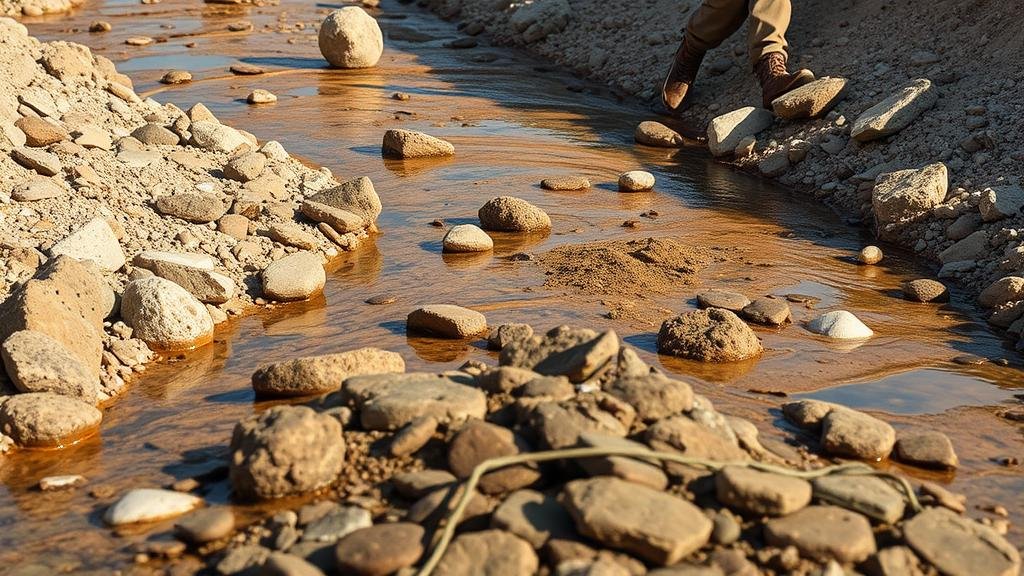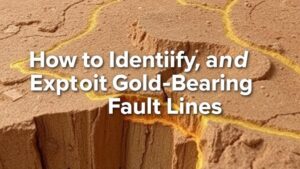Techniques for Recovering Gold From Ephemeral Streambeds in Desert Regions
Techniques for Recovering Gold From Ephemeral Streambeds in Desert Regions
The quest for gold has driven filmmakers, adventurers, and entrepreneurs alike to search the world for this precious metal. In arid desert regions, ephemeral streambeds–temporary streams formed during seasonal rains–can serve as sites of lucrative gold deposits. This article explores various techniques for effectively recovering gold from these challenging environments, supported by concrete examples and applicable methods.
The Geological Context of Gold in Desert Streambeds
Gold is often deposited in streambeds due to natural erosion processes. In desert regions, ephemeral streams can carry mineral-laden sediments during rare rains, accumulating gold particles along their banks. Understanding the geological context is crucial for successful recovery efforts, as the quality and concentration of gold will vary significantly. For example, the Mojave Desert in California contains numerous wash beds that have been historically rich in placer gold due to their proximity to ancient gold deposits.
Techniques for Gold Recovery
- Panning: This traditional method involves using a pan to sift through sediment in search of heavy metals like gold. It requires skill to swirl water and effectively separate sediment based on density.
- Dry Washing: In desert climates, where water is scarce, the dry washing method prevails. This technique uses air to separate gold from soil without the need for water.
- Shaker Tables: In larger operations, shaker tables can be utilized to further concentrate gold. The table’s vibrations help separate heavy materials through stratification.
- Metal Detectors: Advanced technology allows for the use of metal detectors to identify gold nuggets buried in sands or rocky outcrops, substantially enhancing recovery rates.
Case Studies of Successful Recovery
Numerous individuals have had success using these methods in ephemeral streambeds. One notable case is from the dry riverbeds of Nevada, where small-scale prospectors have reported recovering several ounces of gold using a combination of dry washing and metal detection. According to a report by the Nevada Division of Minerals, placer mining in the region yielded over 100,000 ounces of gold in 2022 alone, demonstrating the potential profitability of such efforts.
Environmental Considerations
While recovering gold, attention must also be given to minimizing environmental impact. Desert ecosystems are fragile, and excessive disturbance can lead to erosion and habitat destruction. Techniques such as using biodegradable materials in dry washing and ensuring minimal sediment disruption are essential. A balance between profitability and environmental stewardship is crucial for sustainable mining practices.
Regulatory Framework
Gold recovery in desert areas is subject to various regulations designed to protect natural resources and land rights. In the United States, permits may be required for both small-scale and commercial mining operations in state and federal lands. Prospective miners should consult local jurisdictions, as laws differ significantly from one area to another. Examples of relevant legislation include the Federal Mining Act and state-specific regulations, such as those enforced by the Bureau of Land Management.
Actionable Takeaways
For those looking to explore opportunities for recovering gold from ephemeral streambeds in desert regions, consider the following actionable takeaways:
- Familiarize yourself with the geology of the area to identify locations with potential gold deposits.
- Use a combination of recovery techniques tailored to local conditions–including panning, dry washing, and metal detection.
- Prioritize environmentally responsible practices to minimize ecological disturbance.
- Stay informed about local regulations and obtain necessary permits before engaging in any recovery efforts.
By employing these techniques and adhering to regulatory and environmental standards, prospectors can navigate the challenges of collecting gold from ephemeral streambeds effectively while ensuring sustainable practices.



